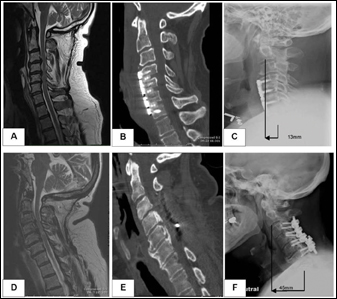Cervical spondylotic myelopathy surgical outcomes depend on the approach used
SAN FRANCISCO — A recent study that looked at quality of life outcomes following surgery for cervical spondylotic myelopathy and compared the results of a dorsal approach to those of a ventral approach showed both approaches could affect a patient’s quality of life postoperatively.

Zoher Ghogawala
In particular, cervical sagittal balance was directly affected by a surgeon choosing either a dorsal or ventral approach, Zoher Ghogawala, MD, FAANS, said in a presentation at the American Association of Neurological Surgeons Annual Meeting.
“The bottom line: we found that both our ventral and dorsal surgery patients had equivalent improvement overall in myelopathy using the modified JOA [Japanese Orthopaedic Association] score,” he said.
Better quality of life outcomes
Ghogawala and colleagues used a scatter plot and found more patients treated with dorsal surgery had an overall sagittal C2-7 imbalance greater than 40 mm as compared to patients who had ventral surgery.

Preoperative MRI and postoperative CT exams are shown with standing plain cervical spine images taken 1 year postoperatively. Shown are images for a patient treated with ventral fusion (A-C) and for a patient treated with dorsal fusion (D-F). Both patients had significant improvement in cervical myelopathy at 1 year, but the patient treated with ventral fusion was in good cervical sagittal balance (13 mm). The dorsal fusion patient was fused with suboptimal cervical sagittal balance (45 mm) and had a decline in overall health-related quality of life 1 year after surgery.
Image: Ghogawala Z
“As we graph this against the overall health related quality outcomes, there seems to be a point around 40 mm where it predicted significantly poorer overall outcomes. Another way of looking at this,” Ghogawala said, “is as we look at patients who had an improvement in health related quality of life, they largely fell into the category where they were less than 40 mm from C2 to C7, and for those patients greater than 45 mm there was essentially no improvement in health related quality of life following the surgery.”
Ghogawala and colleagues analyzed the results of 49 patients treated at four centers who underwent surgery for cervical spondylotic myelopathy. Each patient had a complete radiographic history.
They found the sagittal balance of the patients undergoing the surgery dorsally was much more imbalanced than it was in the patients undergoing the same surgery ventrally.
According to Ghogawala, the baseline characteristics of the ventral patients was similar to the dorsal patients. “This is not a randomized controlled study, but they are quite similar. However, the sagittal balance of C2 to C7 distance between patients with ventral surgery was 22 mm vs. 33 mm, which was a difference in their baseline criteria. But importantly, the postoperative data showed an even greater distance of 37 mm, which was very close to the 40 mm (previously) described,” he said.
A difference in cost
Patients with a high sagittal imbalance had a much higher outpatient cost than patients with a lower imbalance. Also, patients that had a sagittal imbalance of 45 mm or more had almost twice the outpatient costs over a 6-month postoperative period than those patients with an imbalance less than 45 mm, according to Ghogawala.
He said the costs are primarily related to physical therapy, pain medicine and injection treatments that stem from the high sagittal imbalance.
“In conclusion, I think we are making some headway in progress in making an analysis of what types of surgery patients have for cervical myelopathy. Overall, I think surgery is effective in decompressing the spinal cord and improving symptomology associated with myelopathy. Cervical sagittal balance may be an important factor that needs to be considered in the overall surgical planning as it relates to overall health outcomes and long term costs of care,” Ghogawala said. – by Robert LinnehanReference:
Ghogawala Z. Paper #736. Presented at: American Association of Neurological Surgeons Annual Meeting. April 5-9, 2014; San Francisco.For more information:
Zoher Ghogawala, MD, FAANS, can be reached at the Lahey Hospital and Medical Center, 41 Mall Rd., Burlington, MA 01805; email: zoher.ghogawala@lahey.org
Disclosure: Ghogawala receives federal funding from the National Institute of Health and the Patient Centered Outcomes Research Institute.
